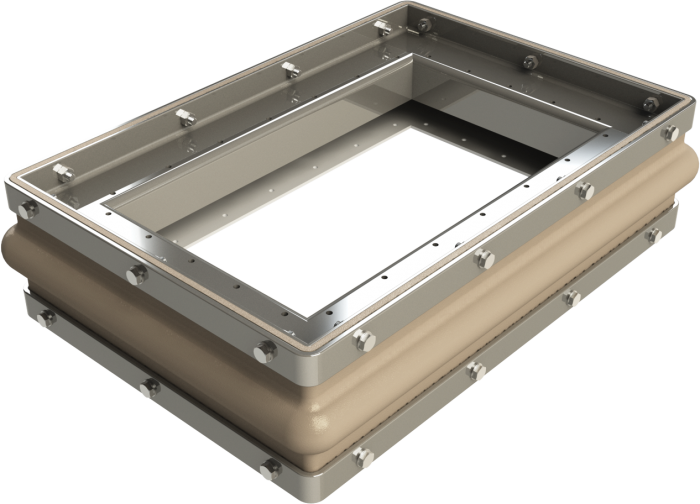FAB Expansion Joint
Features
- Cost efficient for large ducting applications
- Lower initial cost compared to a metal expansion joint
- Lower repair/replacement cost compared to a metal expansion joint
- Can be installed over existing metal expansion joints
- Negligible spring forces
- Large movement capacity
- Can absorb movements in multiple planes
- No size limit (large fabric expansion joints can be provided in multiple pieces)
- Bolt-in or weld-in
Applications
Flexibility and range of motion in small areas in ducting systems, low pressure, or other applications where lower cost and range of motion, can make them a better fit than a metal expansion joint.
Operating Range
- Up to ±5psig depending on applications
Materials
Belt materials
- Teflon
- Darlyn
- Viton
- EPDM
- Composite Teflon
Frame materials
- A36
- A588 (Corten)
- A516/70
- Stainless steel
- Other alloys
FAB FIT
- Belts are attached by bolting to angle or plate flanges, or duct sections.
- End connections may conform to ducting sizes, or customer designed.
- Fittings may be the same at each end or different.
- Corners are typically 90 degree, but may also be rounded.
FAB FORM:
- One rectangular flow area non-metallic belt.
- Typical dimensions of 12” x 12” minimum, up to 240” square. Overall length may vary, typically within the range of 12” to 48”.
- Additional accessories maybe incorporated such as load
bearing restraints, movement limiters, protection devices.
FAB FUNCTION
- Absorbs ducting thermal or vibratory movement, primarily axial and lateral.
- Movement amplitude varies, typically within the range of 1/4” to 10”.
- Movement frequency typically is low cycle (1 to 100 cycles per year).

